Channel-Billed Cuckoo
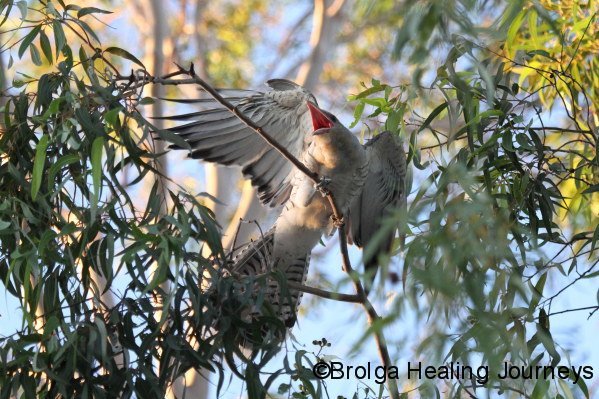
Nirbeeja grew up on a ginger and produce farm in Buderim, in south-eastern Queensland. It was an idyllic existence, in a beautiful part of our country before the area was over-developed. During the stormy summer months she would often hear an unusual bird call, and was informed by her father that it was made by the Storm Bird, and heralded the coming rains. She often heard the call but doesn’t recall seeing the bird.
She was therefore very excited to hear the same call here in Alice Springs, during our stormy weather last summer. She was even more excited to see the bird making the call. At last! After much consulting of our bird-books, she decided that the so-called Storm Bird was none other than the Channel-Billed Cuckoo. Interestingly, the local Aboriginal people say that when the Channel-Billed Cuckoo is seen in this area, it means big rains are coming. And they are right, for the Todd River has flowed three times this year after consistent heavy falls.
This exotic creature is the world’s largest Cuckoo, and is found in Australia, Papua New Guinea and Indonesia, and rarely, in New Zealand. It usually lives in the tropics, but has a small outpost here in Alice. The adult of this species has a very large bill, used mainly for eating fruit, although this Cuckoo is also known to eat insects and other small creatures.
You are probably aware that adult Cuckoos lay their eggs in the nests of other species. This is achieved by the male distracting or chasing the other birds from the nest, with his mate sneaking in to lay her egg during the short time the other birds are absent. The unsuspecting surrogate parents are left to tend to the egg, then raise and feed the resulting chick. The Cuckoo is therefore known as a ‘brood parasite’. Unlike the chicks of many Cuckoo species, the baby Channel-Billed Cuckoo does not push the other chicks out of the surrogate nest, although given its relative size and the rate at which it grows, few other chicks survive the competition it provides for food from the ‘parents’.
Nirbeeja later caught several fleeting glimpses of a Channel-Billed Cuckoo chick in a local Crow’s nest which was nestled high up in a gum tree here in Alice. Unfortunately, it was a little too high up to get any photos.
Yesterday, around dusk, I heard what I thought was the cry of a baby Butcherbird, a similar sound to the cry of the young Magpie. But when our neighbours excitedly called that it was the young Channel-Billed Cuckoo, and that it had flown down into a tree directly above our camper trailer, I grabbed the camera and was thrilled to see this fledgling bird being fed by its Crow ‘parents’. Crows are not small birds, but this young Cuckoo was already larger than them. I wonder if Crows ever question the parentage of “their” offspring!
It was a rare and unexpected wildlife thrill.
1 June 2010
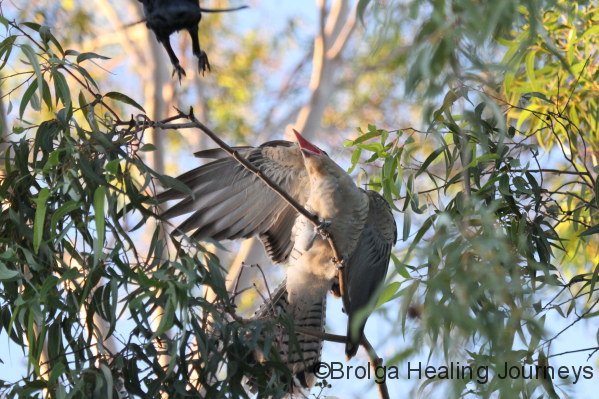
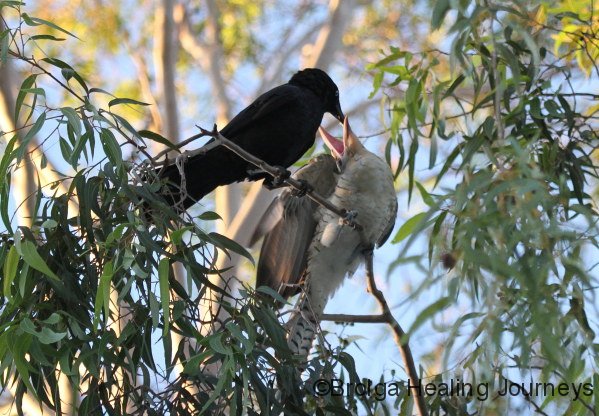
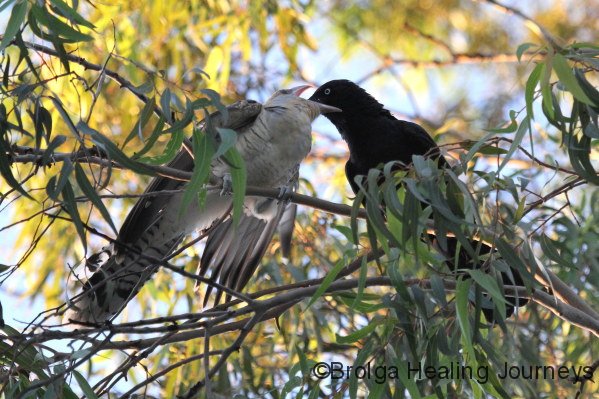
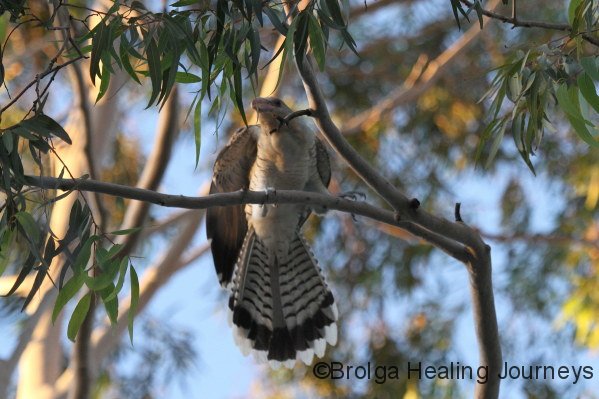
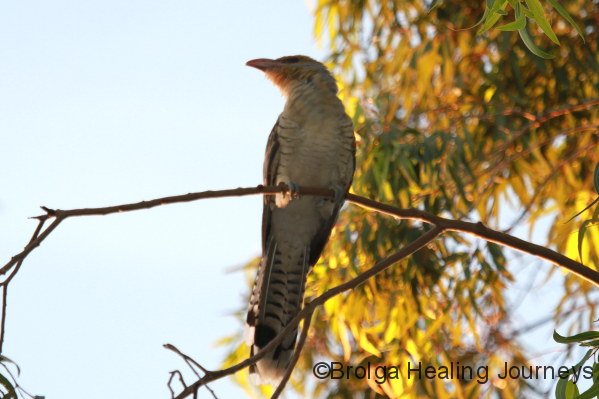
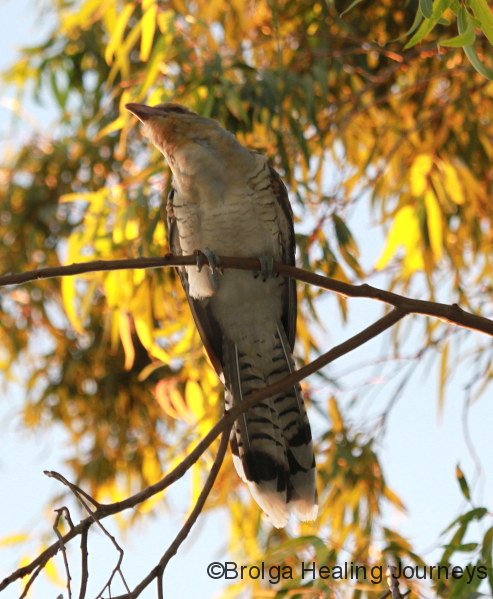
How privileged to have this happen on your doorstep, well captured, many Omms
Thanks Sandra. Yes, it was a real blessing from Mother Nature.
Wow!! So fascinating, such a great story, and stunning photography!
Your photography is awesome. Your patience in capturing the moment is just brilliant.
Thank you
Great photos. The crows in our neighbourhood (Braitling)usually rear a Channel Billed Cuckoo each year for the past three or four years. It is great to see them grow. The crows are rebuilding their nest at the moment so we expect to a young cuckoo in a couple of months.
Yes, it is an amazing thing to see. Especially since the young Cuckoo soon outgrows the crows! It’s interesting to see they are now well and truly part of the Alice Springs environment. Until fairly recently, they were rarely if ever seen in the area.
Thank you for this interesting article. We presently, January 2012, have a very noisy baby Channel Billed Cuckoo being fed by their crow “parents”. We previously have had the same situation here a number of years ago at Greenbank Queensland but with the parents being Pee Wees which was even more amazing as they are quite a small bird.
Great photos. Enjoy our outdoors and bird life.
Thanks for your comments Lorraine. It must have been amazing to see a cuckoo being raised by Pee Wees!